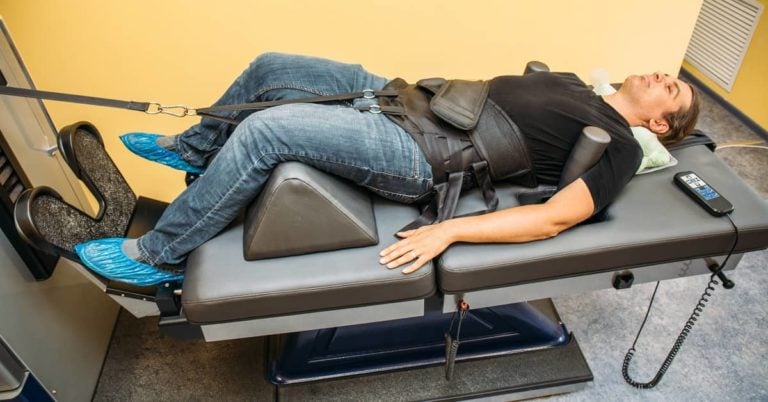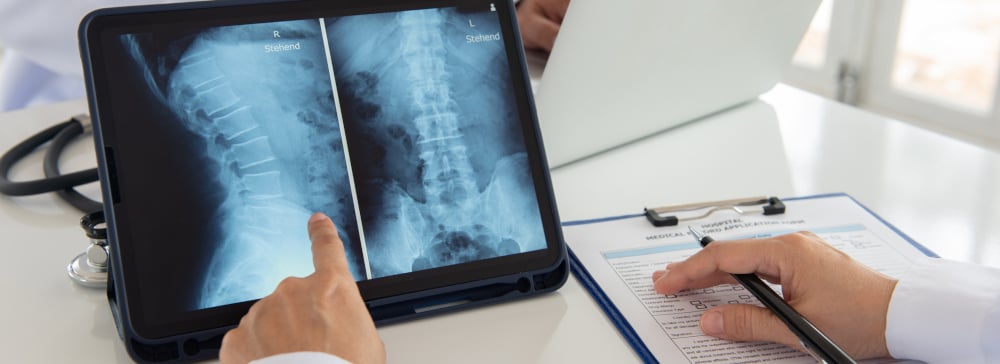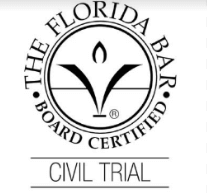
How Serious Is a Spinal Cord Injury?
Table of Contents
From automobile collisions to falls to sports injuries, a variety of incidents can result in damage to the spinal cord. All spinal cord injuries should be treated as medical emergencies. However, not all spinal cord injury victims face paralysis and other extreme outcomes.
If you or a loved one suffered a spinal cord injury due to someone else’s negligence, it is important to speak to an attorney as soon as possible. You may be entitled to significant compensation for the losses associated with such a catastrophic injury.
The spinal cord injury lawyers at Kogan & DiSalvo have extensive experience serving clients who have suffered damage to the spinal cord and other catastrophic injuries. Contact us today for a free case evaluation.
Types of Spinal Cord Injuries

A spinal cord injury may be classified as complete or incomplete. Both the location of the injury to the spine and the severity of damage to the cord play key roles in determining the seriousness of a spinal cord injury.
The severity of a spinal cord injury is graded according to a scale developed by the American Spinal Injury Association (ASIA) that assesses the level of impairment. Spinal cord injuries can be graded on the ASIA Impairment Scale (AIS) as follows:
- Complete (AIS A): Victims with complete spinal cord injuries suffer total loss of sensation and motor function at and below the site of the injury.
- Sensory Incomplete (AIS B): Motor function is lost but some sensation is present.
- Motor Incomplete (AIS C): Motor function is partially preserved, but less than half of the affected muscles have full range of motion in resistance to gravity.
- Motor Incomplete (AIS D): Motor function is partially preserved, with more than half of the affected muscles having full range of motion in resistance to gravity.
Most people associate spinal cord injuries with one very serious outcome: paralysis. In extreme cases, spinal cord injury victims may suffer paraplegia (paralysis at and below the lower abdomen or waist) or quadriplegia/tetraplegia (paralysis at and below the neck). However, as you can see from the AIS grades above, spinal cord injuries can have a variety of different effects.
What Are the Serious Effects of a Spinal Cord Injury?

For victims and their families, the seriousness of a spinal cord injury is often determined not by the grade on a scale used by medical professionals but by how the injury affects day-to-day life. Spinal cord injuries can affect the following:
- Mobility: Most spinal cord injury victims require some form of mobility assistance. Those with injuries to the lumbar spine (i.e., the vertebrae in the lower back) may be able to move using crutches, a walker, or other device, while those with injuries higher on the spine typically require a wheelchair.
- Employment: Depending on the occupation you had before the accident, a spinal cord injury can significantly affect the ability to do your job. Alternative or light duty may be possible (especially with vocational therapy, accommodations from your employer, and/or adaptive technology), but some people with severe spinal cord injuries are unable to work.
- Self-care: The ability to bathe, groom, and feed oneself (among other activities) may all be affected by a spinal cord injury. Injury to the thoracic (upper back) and lumbar spine may not impede self-care, but those who suffer cervical spine injuries (i.e., damage to vertebrae in the neck) often require the assistance of a family member or professional caregiver for these tasks.
- Breathing: Cervical and upper thoracic spinal cord injuries can lead to difficulties in respiration and airway management. In severe cases, a ventilator may be necessary to help with breathing.
- Bladder and bowel control: Issues controlling the bladder and/or the bowels may occur with any level of spinal cord injury. This can lead to incontinence and other complications (such as an elevated risk of urinary tract infections).
- Pain: Although incomplete spinal cord injuries may lead to impairment or complete loss of movement, sensation in the affected area(s) may still remain. Tragically, victims of incomplete injury to the spinal cord may suffer pain as a result of nerve damage, muscle spasms, and more.
- Sexual function: Loss of feeling and mobility can make it difficult or even impossible for victims of spinal cord injury to enjoy the intimacy they once had with a significant other. This can lead to issues such as sexual frustration and depression.
- Physical health: With therapy and support, those with spinal cord injuries can enjoy healthy and active lives. In fact, a care plan that emphasizes activities within the patient’s capacity is crucial for minimizing the risk of secondary conditions such as bedsores, muscle atrophy, undiagnosed infections, and more.
Correct diagnosis and grading of a spinal cord injury is crucial for creating the proper treatment plan, assessing options for therapy, and identifying potential challenges and limitations you may face. Thorough documentation of your symptoms is also crucial for maximizing your recovery in a spinal cord injury claim.
Spinal cord injuries are expensive to treat and lead to a wide variety of practical, emotional, and psychological challenges. If the negligence of another party caused your spinal cord injury, it is in your best interest to contact an experienced attorney as soon as possible.
Contact a Spinal Cord Injury Lawyer Today

Spinal cord injuries are life-altering events. Victims and their families can face a wide variety of challenges depending on the type and grade of the injury.
Each case of spinal cord injury is different. Your legal strategy should be, too.
The spinal cord injury lawyers at Kogan & DiSalvo work with top medical experts to assess the seriousness of the injury, how it occurred, and your prognosis. We also thoroughly investigate the unique circumstances of your injury and identify all of the liable parties. Our team explores all options for pursuing full compensation on your behalf – even going to trial, if that presents the best likelihood of the outcome you deserve.
Please call Kogan & DiSalvo at (561) 375-9500 today for a free case evaluation. Our spinal cord injury lawyers serve clients in Boca Raton, Boynton Beach, Delray Beach, Ft. Lauderdale, Lakeland, Palm Bay, St. Petersburg, Stuart, Tampa, Vero Beach, and West Palm Beach.
 (561) 375-9500
(561) 375-9500
 Call
Call





